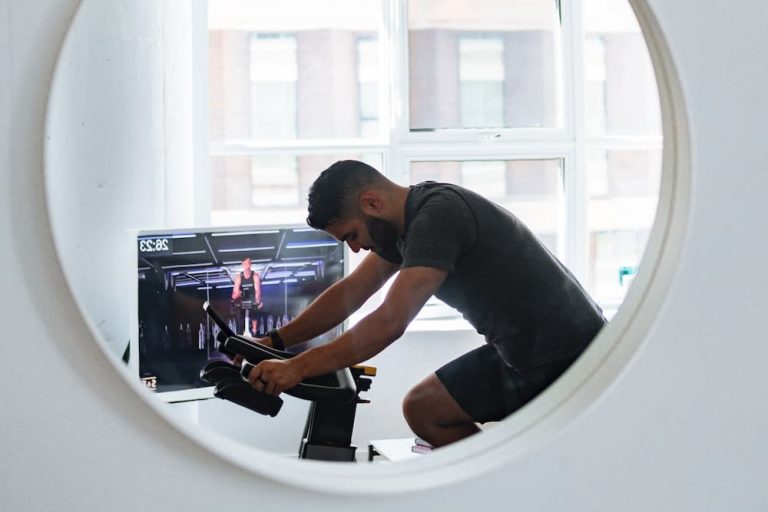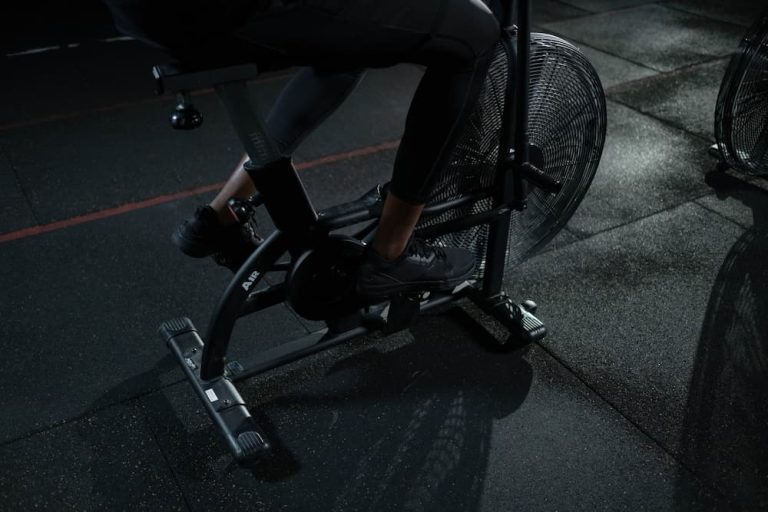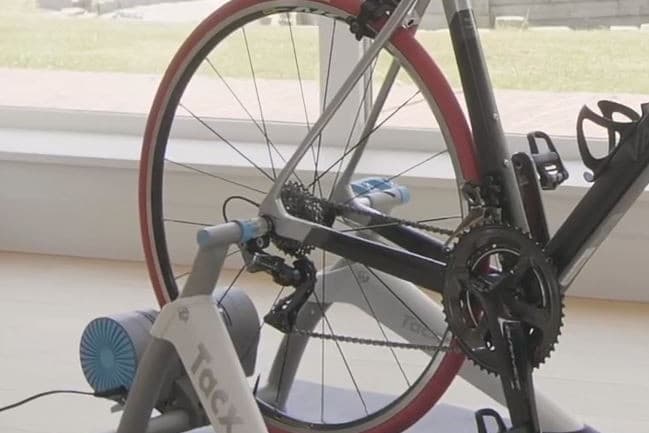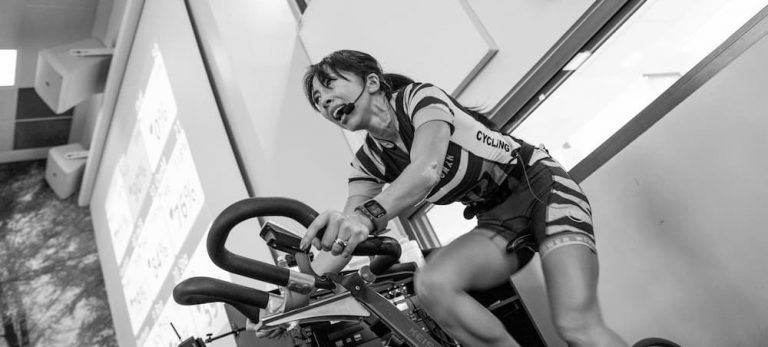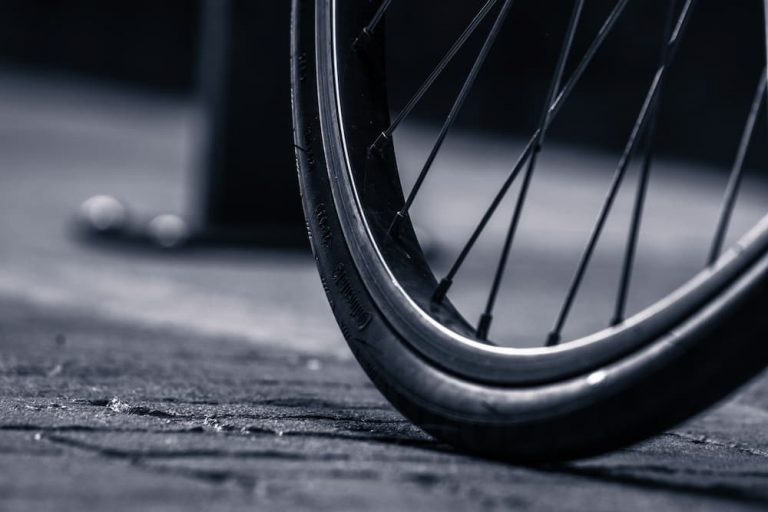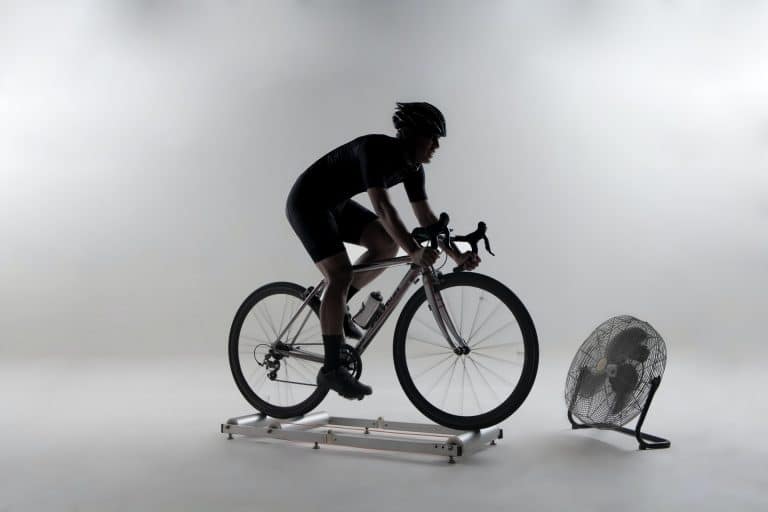Do Indoor Bike Trainers Damage Your Bike?
As an avid cyclist, you’ve likely considered the convenience of a bike trainer for indoor training. However, there’s a nagging worry – could this handy tool secretly harm your beloved bike?
Picture this. You’re pedaling away on your trainer, blissfully unaware that each session might be straining your bike’s vital components. Uneven pressure on the spokes, increased stress on the skewer, or corrosive sweat dripping onto crucial parts – these aren’t just possibilities. They’re common occurrences that can lead to premature wear and tear or, worse, a catastrophic failure mid-ride.
Fortunately, there’s good news. This article dives deep into the heart of these concerns. We’ll explore exactly which parts of your bike are at risk and provide you with expert advice on preventing any damage. By understanding the potential issues and implementing our straightforward maintenance tips, you can enjoy the benefits of your bike trainer with complete peace of mind, keeping your bike in pristine condition.
Does A Bike Trainer Damage My Bike?
No, the indoor bike trainer will not damage your bicycle if you use it wisely and protect your bike using indoor cycling accessories.
The indoor trainer won’t affect every component on your bike, but the number of potentially affected components isn’t low either.
In this section, we’ll take a look at the components that are affected by the most popular types of bike trainers, and we’ll also provide tips on preventing them. So, let’s get right to it!
Related reading: Best Indoor Cycling Accessories
Front Wheel and Spokes
You won’t need to turn the front wheel at all when riding on a stationary bike stand. This does take a significant load off of you, but it affects the spokes of the front wheel. As you’ll ride straight all the time, the pressure distribution across the front wheel spokes won’t be even. Thus, some spokes will weaken over time while others are overloaded.
However, you can fix this issue quite easily. Just remember to turn the direction of the front wheel by a quarter before every session you go for. This will ensure an even pressure distribution across the spokes.
Rear tires, on the other hand, are a completely different issue.
Skewer
The rear skewer on your bike will undergo more pressure when it’s not moving. This is why there’s a huge chance of breaking them while using trainers. Even if they don’t break, the skewer may get bent under immense pressure, affecting the bike’s performance.
Sometimes, the skewer can flex the quick-release axle, disconnecting the frame from the trainer. If this comes to be, not only the frame but the rider will be damaged as well.
One major way to keep the skewer safe is to ensure that it fits well. Some skewers that come with the trainers don’t fit the bike well. These increase the risk of an accident or damage. If the provided accessory doesn’t fit your bike, we recommend shopping for a better-fitting aftermarket one.
Top Tube
When you bike using a trainer, both the top tube and the handlebar fall in the splash zone of your sweat. If they aren’t cleaned after every session, the sweat will corrode any exposed aluminum components, including the top tube. They mainly affect the screws on these parts. Over time, this can be very detrimental to your bicycle.
You can prevent that from happening if you wipe the sweat after every session, so we highly recommend keeping that in mind. You should also consider getting a sweat cover.
Bottom Bracket and Downtube
The bottom bracket and the downtube aren’t safe from your sweat either, as gravity will ensure it reaches these components. Sweat can corrode the bolts on the water cage and the bottom bracket. If exposed metal parts are on the bottom bracket, they will also corrode.
Our suggestion is the same. Identify the components where the sweat reaches and wipe them clean with a dry towel after every indoor cycling session. This will prevent the brackets from corroding over time.
Bike Seat
Another important component that your sweat can affect is the seat post. The aluminum on seat posts is usually exposed, so they are more vulnerable to your sweat than most other components. Plus, it handles immense pressure every time you use it, which is why there are more chances that it’ll get damaged.
Wiping the seat post won’t be enough this time. To keep it safe from harm, you need to apply grease on the seat post regularly. Instead of grease, using any anti-seize compound will do as well. If you want to avoid this entirely, we highly recommend swapping out the stock aluminum seat post with a carbon one. These are well crafted and don’t get affected by sweat.
Handlebars
Finally, there are the handlebars. We recommend swapping them out with carbon ones if you use aluminum handlebars. Aluminum handlebars get damaged very fast as they endure great pressure in every session and stay in contact with your sweaty hands throughout the time.
Even if you wipe the handlebars after each session, it won’t be enough to avoid damaging your bike. They’ll be in contact with your sweat long enough to corrode them. What makes things worse is that the failure of the handlebars during the sprint session can be catastrophic.
An easy solution to this is laying a piece of towel on the handlebars. Of course, this will make the experience a bit uncomfortable for some. If you want a comfortable experience, try the following suggestions.
Of course, you can try riding a pair of gloves to ensure the sweat doesn’t keep in contact with the handlebars. However, not everyone will be able to do this due to various reasons.
If you want to keep the handlebars long-lasting without switching to carbon ones, you must change the tape on them at least once a year. Even better if you can do that twice. Whenever you change the tapes, check for corrosion.
To keep the bars corrosion-free, you can apply anti-seize compounds regularly.
Finally, get carbon handlebars if you don’t want to avoid corrosion. You’ll have to spend some extra bucks, but it’ll definitely be worth it!
Frequently Asked Questions
Can using a bike trainer affect my bike’s alignment over time?
While bike trainers don’t typically cause alignment issues directly, improper mounting or a misaligned trainer can lead to uneven pressure on the bike frame, potentially causing alignment problems over time. To prevent this, ensure your bike is mounted correctly, and the trainer is well-aligned.
Is there a risk of tire wear when using a bike trainer?
Yes, using a bike trainer can cause increased wear on your rear tire due to the constant friction against the trainer’s drum. Many cyclists use a trainer-specific tire or an old tire to mitigate this issue.
Related reading: Do Bike Trainers Ruin Tires?
How often should I check my bike for potential wear or damage from the trainer?
It’s wise to conduct a thorough check of your bike’s key components, such as the tires, skewers, and frame, after every few sessions on the trainer. Regular maintenance checks help identify early signs of wear or damage, allowing for timely interventions.
Conclusion
Using a bike trainer, if done without proper care, can indeed lead to wear and tear on your bicycle.
Key areas of concern include the front wheel and spokes, the rear skewer, the top tube, the bottom bracket and downtube, the bike seat, and the handlebars. Each of these components faces unique challenges when subjected to the stationary conditions of a bike trainer. For instance, the front wheel spokes might suffer from uneven pressure distribution, while the rear skewer could undergo excessive pressure, leading to potential bending or breakage. Similarly, components like the top tube, bottom bracket, and handlebars are susceptible to sweat-induced corrosion.
The good news is that with a few proactive measures, you can significantly mitigate these risks.
- Adjusting the front wheel’s orientation regularly helps distribute pressure evenly across the spokes.
- Ensuring a proper fit for the rear skewer and opting for a well-suited aftermarket option can safeguard against undue strain.
- Routine cleaning to remove sweat, applying grease or anti-seize compounds to vulnerable areas like the seat post, and considering upgrades to more durable materials like carbon for certain parts can all contribute to extending the life of your bike while using a trainer.
In my experience, the key to maintaining your bike in top condition while using a trainer is a mix of preventive maintenance and thoughtful upgrades. By being aware of the potential stress points and addressing them proactively, you can enjoy the benefits of indoor training without compromising the integrity of your beloved bicycle.

